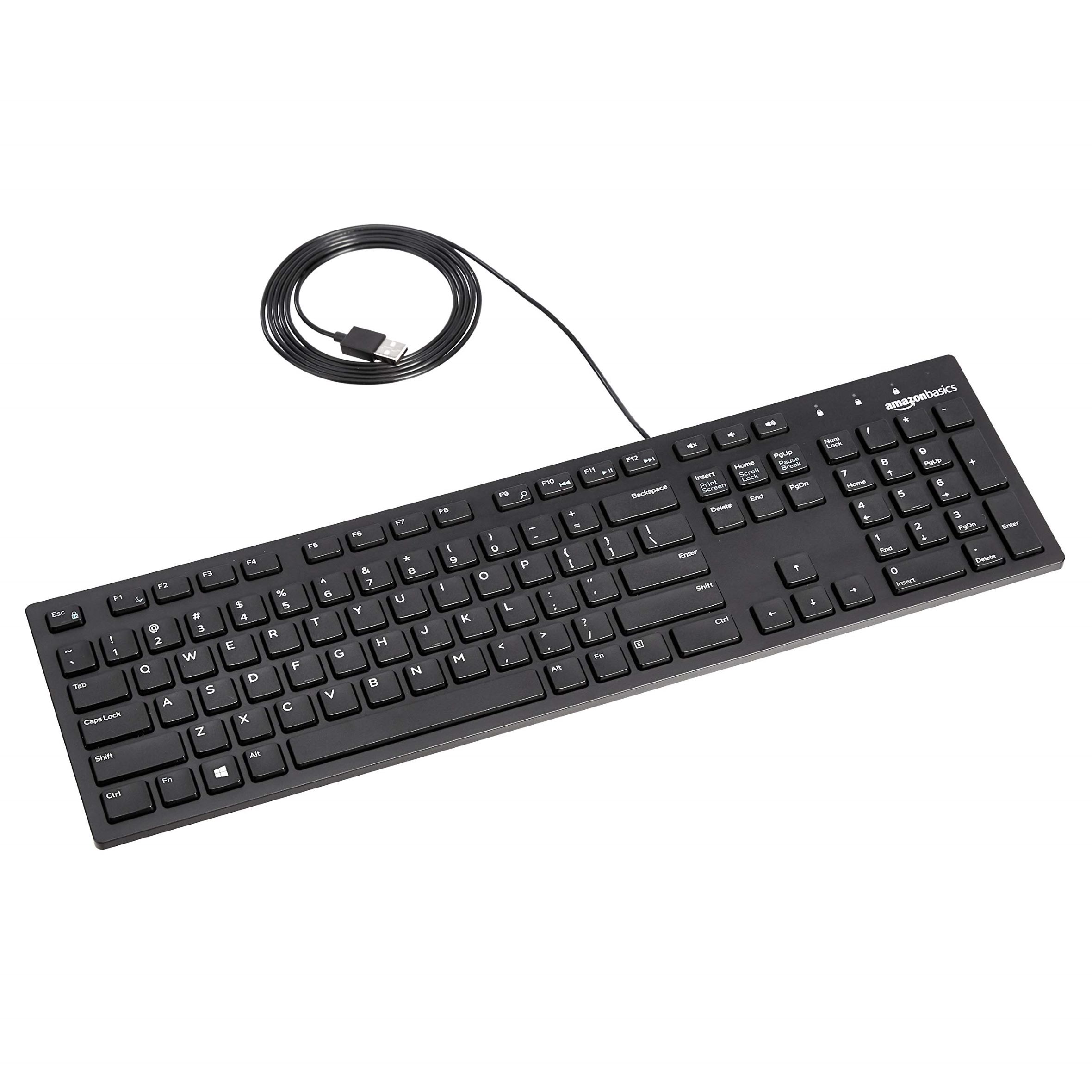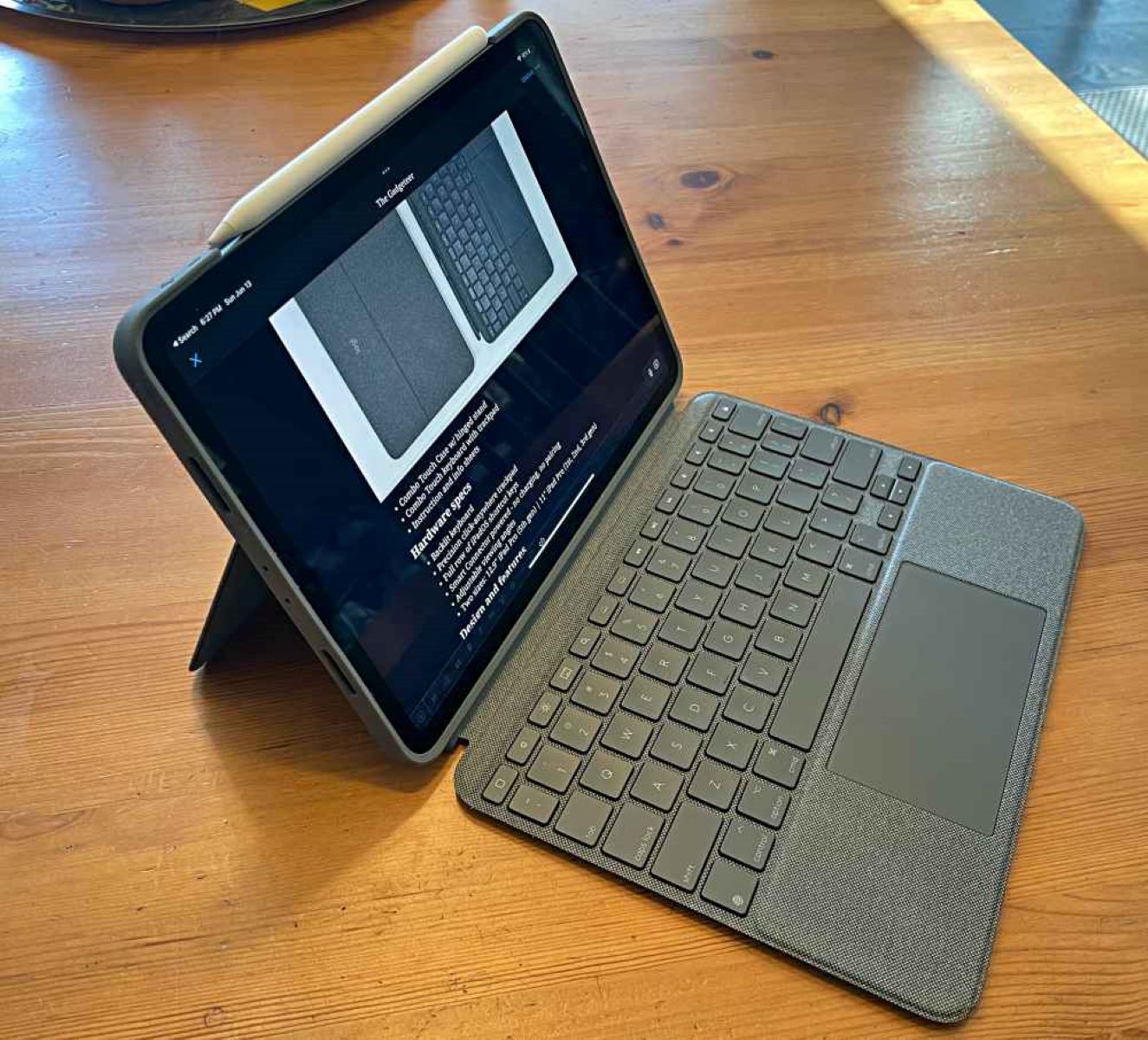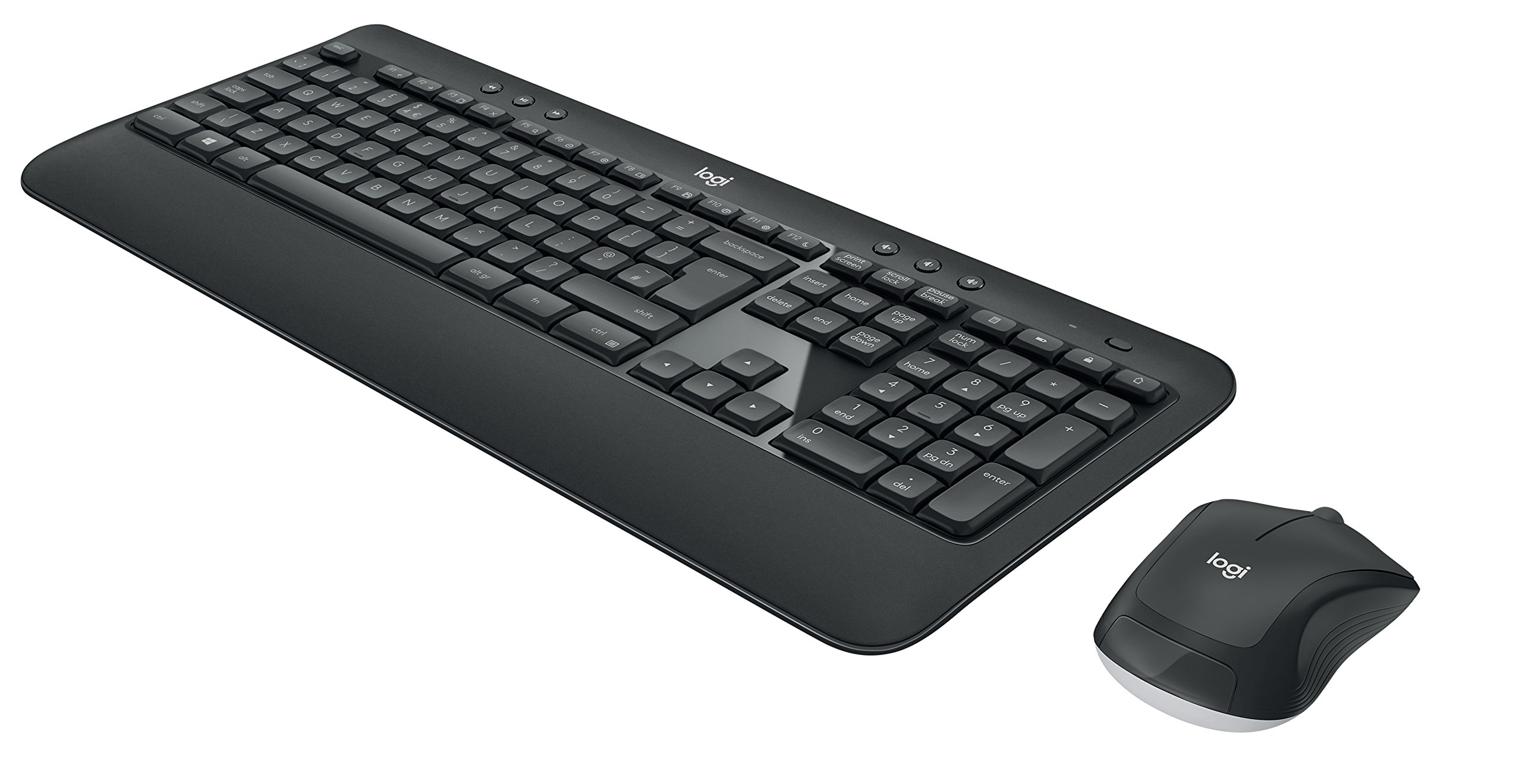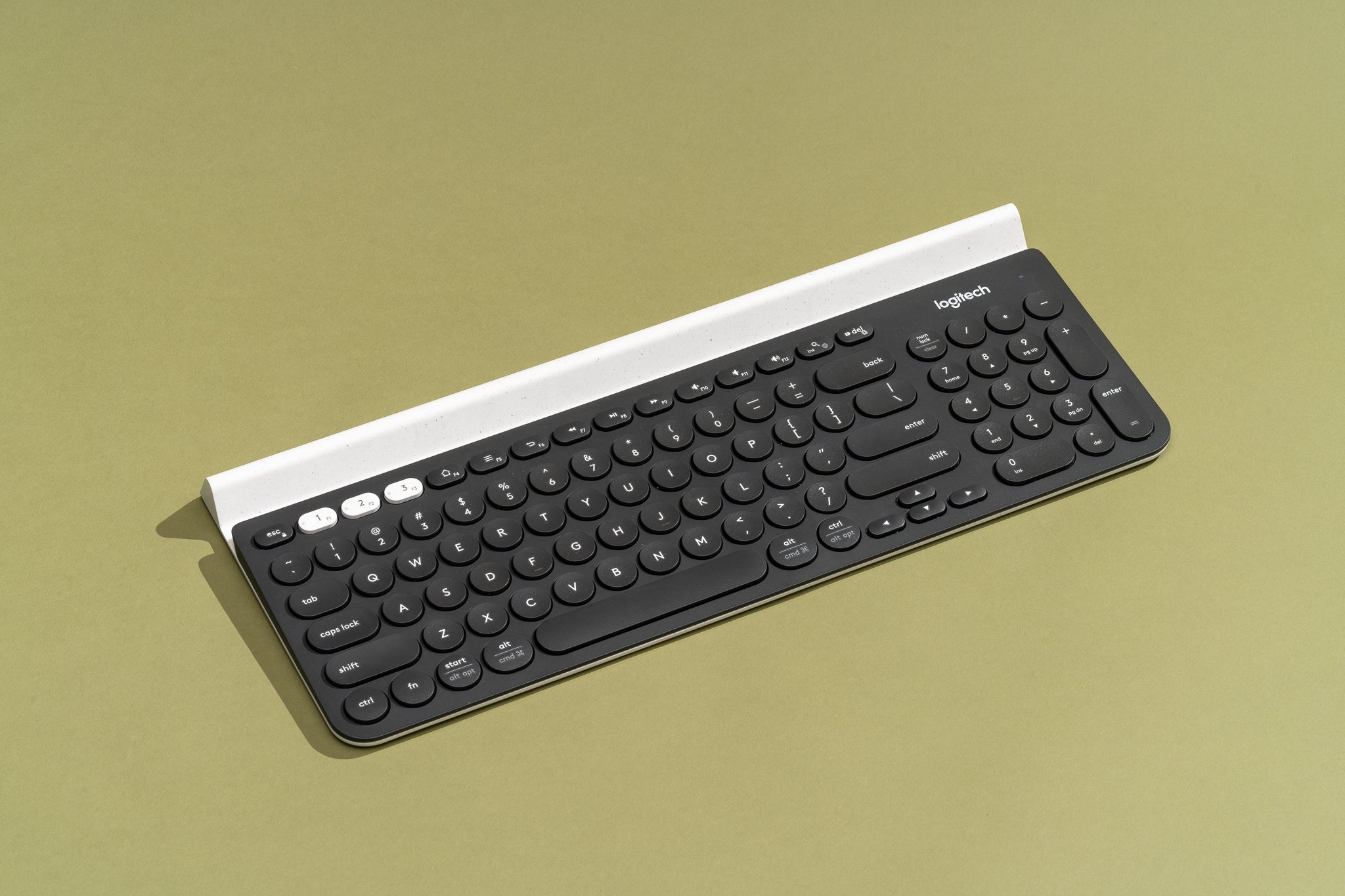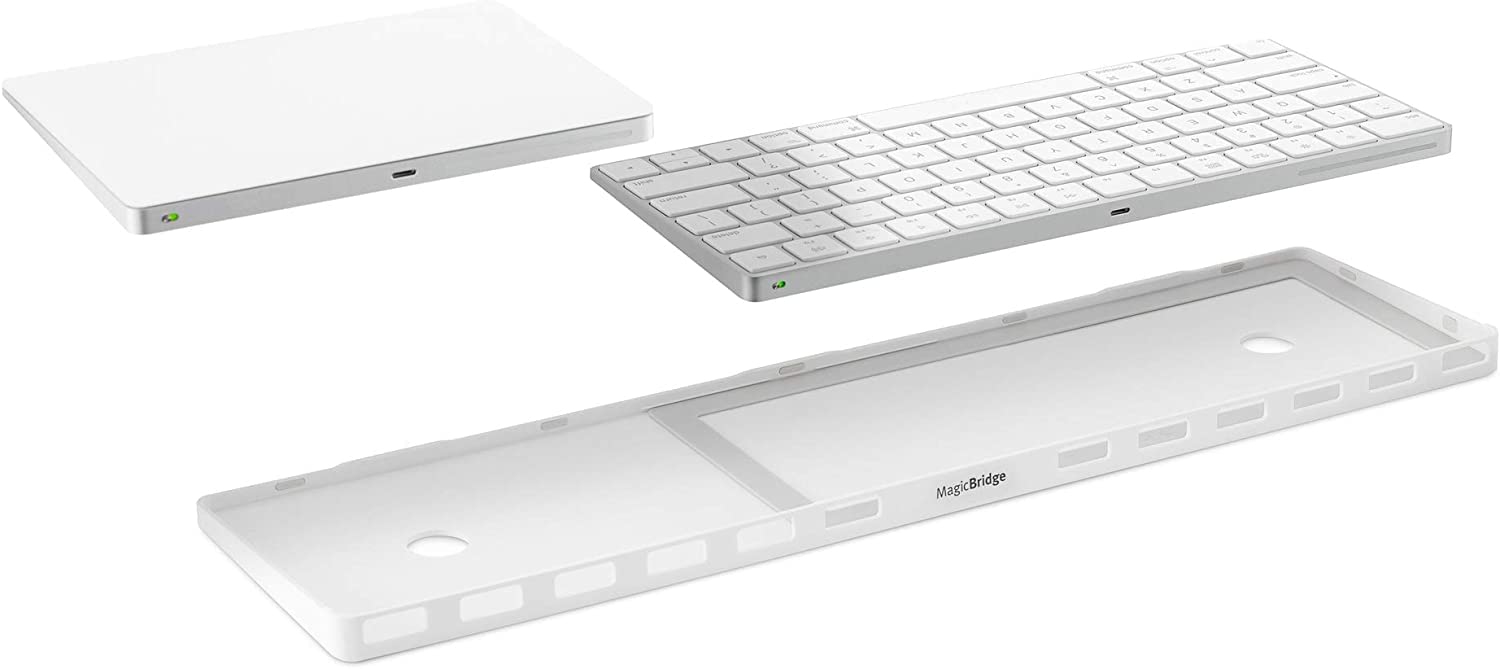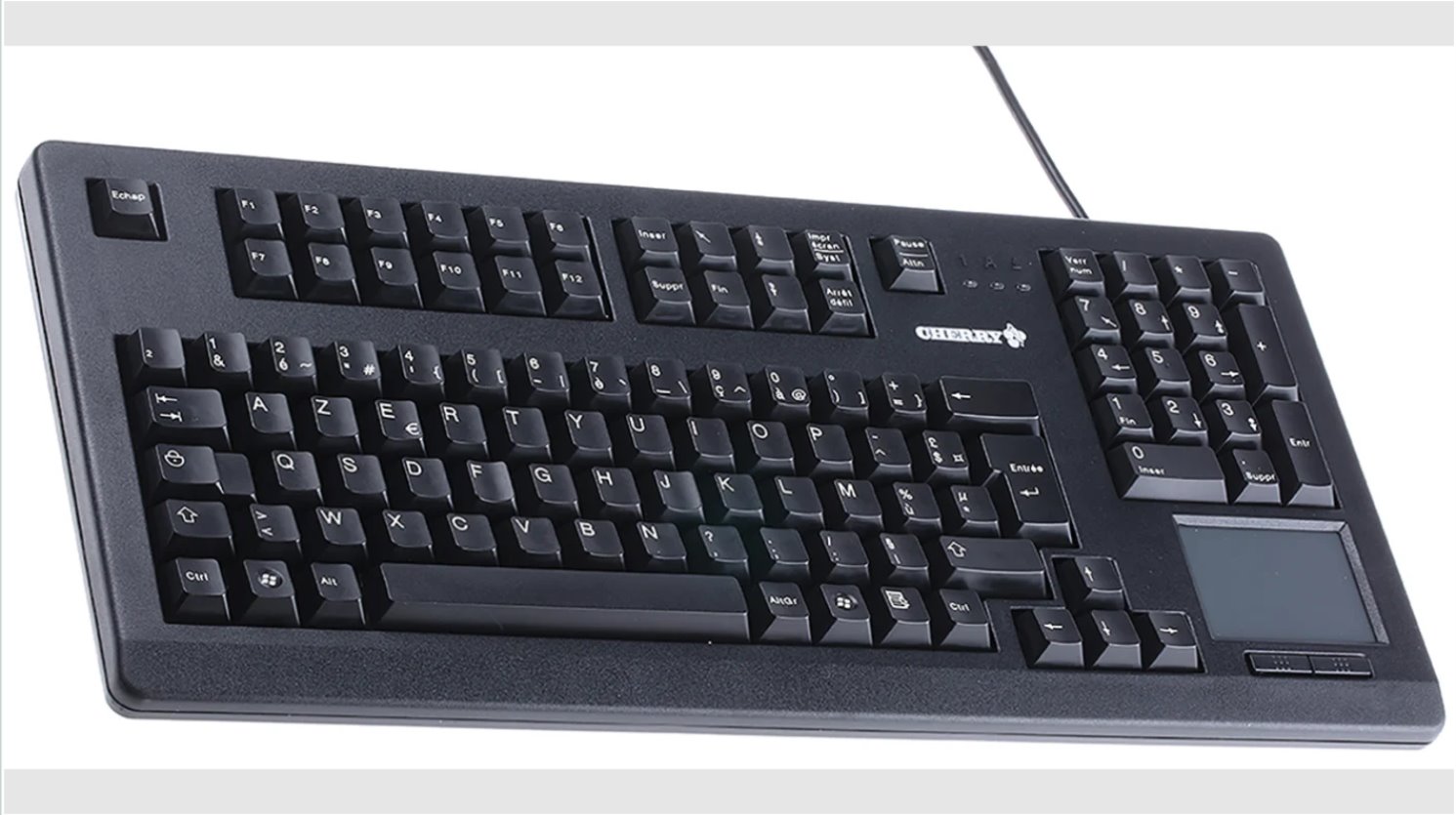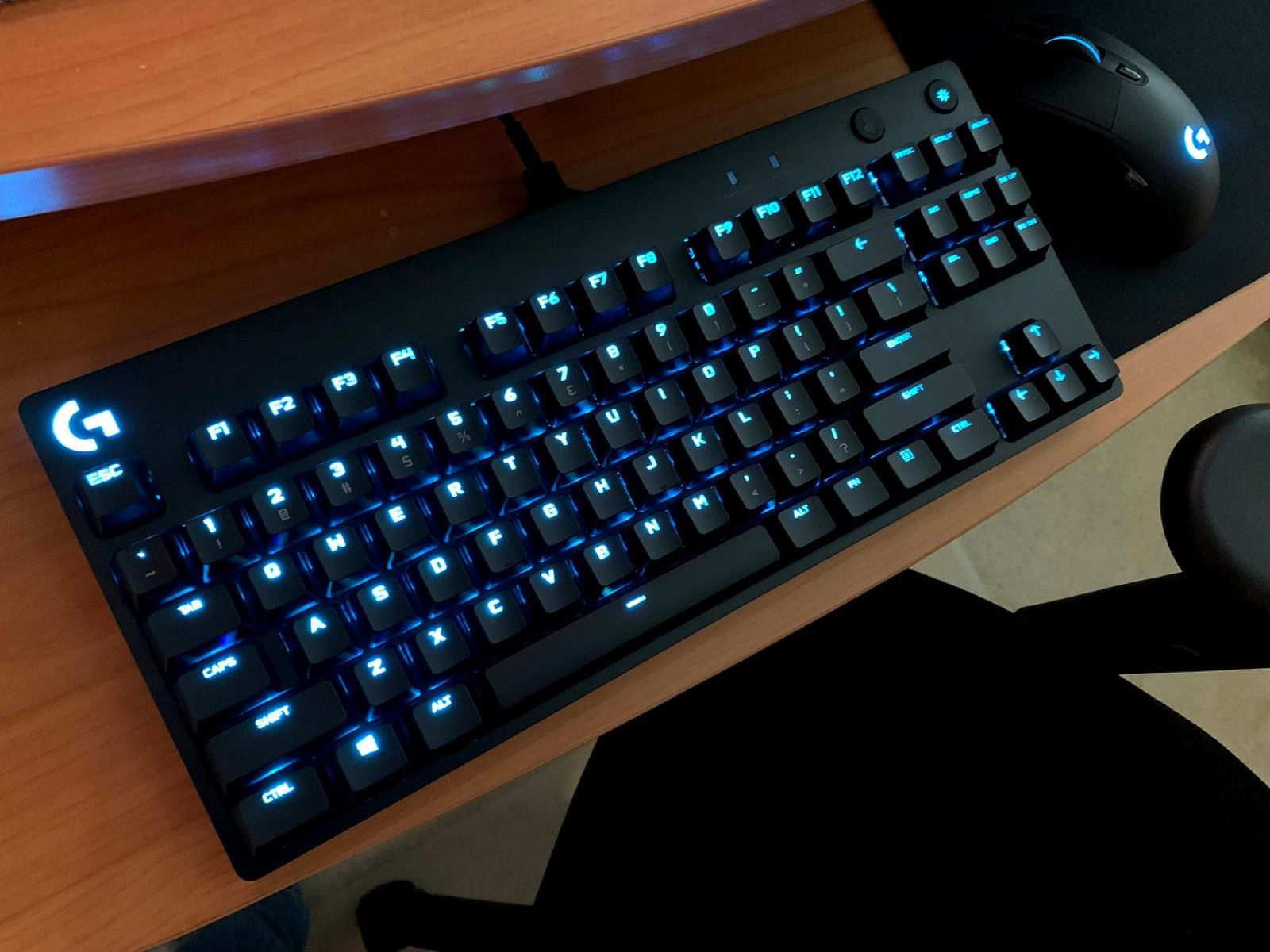Introduction
When it comes to using your home computer, having the right peripherals can enhance your overall user experience. One essential peripheral that many people opt for is a wireless keyboard. Unlike traditional wired keyboards, a wireless keyboard provides convenience and freedom of movement, allowing you to work or play from a comfortable distance. However, before rushing to buy a wireless keyboard, there are several factors that you should consider to ensure compatibility, functionality, and overall satisfaction.
Wireless keyboards have become increasingly popular due to their ease of use and clutter-free setup. They use radio frequency (RF) or Bluetooth technology to connect to your computer, eliminating the need for tangled wires. Moreover, they offer flexibility, allowing you to work or type from different positions, whether you’re sitting at your desk or lounging on the couch.
However, with the wide variety of wireless keyboards available on the market, it’s important to weigh your options and make an informed choice. This article will delve into the key factors you should consider before purchasing a wireless keyboard for your home computer setup.
Compatibility
One of the most critical factors to consider when choosing a wireless keyboard for your home computer is its compatibility with your operating system. While many wireless keyboards are designed to be compatible with multiple operating systems such as Windows, macOS, and Linux, it’s essential to double-check before making a purchase.
Additionally, you should ensure that the wireless keyboard is compatible with the specific version of the operating system you’re using. Some keyboards may have limited functionality or require additional software installation with certain operating systems, so it’s crucial to do your research to avoid any compatibility issues.
Another aspect to consider when it comes to compatibility is the connectivity options provided by the wireless keyboard. Make sure that your home computer has the necessary ports or supports the wireless technology used by the keyboard. For example, if the keyboard uses Bluetooth connectivity, ensure that your computer has built-in Bluetooth capability or an available USB port for a Bluetooth dongle.
It’s also worth noting that some wireless keyboards are compatible with other devices such as tablets or smart TVs. If you plan to use the keyboard with other devices in addition to your home computer, make sure that it supports the necessary connectivity and has compatible drivers for those devices.
By taking into account the compatibility aspects of a wireless keyboard, you can ensure that it seamlessly integrates with your home computer system, enhancing your productivity and overall experience without any compatibility conflicts.
Connection Type
Another important consideration when choosing a wireless keyboard for your home computer is the type of connection it utilizes. There are two primary connection types for wireless keyboards: radio frequency (RF) and Bluetooth.
RF wireless keyboards require a USB receiver that plugs into a USB port on your computer. This receiver communicates with the keyboard over a radio frequency, allowing for a reliable and stable connection. RF keyboards typically have a longer range compared to Bluetooth keyboards, which can be beneficial if you need to work or type from a distance away from your computer.
On the other hand, Bluetooth wireless keyboards connect directly to your computer without the need for a USB receiver. They utilize Bluetooth technology to establish a wireless connection, eliminating the need for an extra piece of hardware. Bluetooth keyboards are generally more versatile since they can connect to multiple devices, such as tablets or smartphones, in addition to your home computer.
When selecting a wireless keyboard, consider the connection type that best suits your needs and preferences. If you primarily use your home computer and value a longer range, an RF wireless keyboard may be the ideal choice. However, if you want the flexibility to connect the keyboard to other devices and prefer a clutter-free setup, a Bluetooth keyboard might be the better option.
It’s crucial to check the compatibility of the connection type with your computer system. Ensure that your computer has the necessary ports or supports Bluetooth connectivity for seamless and hassle-free connection.
By considering the connection type, you can choose a wireless keyboard that not only provides a reliable and effortless connection but also aligns with your specific needs and preferences for using it with your home computer.
Battery Life
One of the key factors to consider when selecting a wireless keyboard for your home computer is the battery life it offers. Since wireless keyboards are not powered by the computer itself, they rely on internal batteries for operation. Therefore, it is essential to choose a keyboard with a battery life that matches your usage requirements.
The battery life of wireless keyboards can vary significantly depending on various factors, such as the type of battery used (AA, AAA, rechargeable), the keyboard’s power-saving features, and your usage patterns. It is generally recommended to opt for a keyboard with a longer battery life to minimize the frequency of battery replacements or recharging.
If you use your home computer for extended periods, an important consideration is the power-saving features of the wireless keyboard. Look for keyboards that have features like automatic sleep mode or power-off when not in use. These features can significantly extend the battery life by conserving power when the keyboard is idle.
Another factor to consider is the battery indicator. Some wireless keyboards come with an LED indicator that displays the battery level, allowing you to monitor battery usage and plan replacements or recharging accordingly. This can help you avoid unexpected disruptions during use.
Additionally, if you opt for a wireless keyboard with rechargeable batteries, consider the convenience and compatibility of the charging mechanism. Look for keyboards that include a micro USB cable or wireless charging option for easy and hassle-free recharging.
Ultimately, choosing a wireless keyboard with a long-lasting battery life ensures that you can use your home computer without frequent interruptions or the inconvenience of having to replace batteries frequently. Consider your usage patterns and the power-saving features of the keyboard to make an informed decision about the battery life that suits your needs.
Ergonomics
Ergonomics is a crucial consideration when choosing a wireless keyboard for your home computer. Since typing for extended periods can lead to discomfort and potential health issues, it is essential to select a keyboard that is ergonomically designed to promote comfortable and natural hand and wrist positions.
One aspect of ergonomics to consider is the keyboard layout. Look for keyboards with a well-spaced and logically arranged layout that allows for easy and accurate typing. Additionally, keyboards with a slight curve or split design can help promote a more natural hand and wrist position, reducing the risk of strain or fatigue.
Another important factor is the key design and size. Keyboards with well-designed and responsive keys provide a comfortable typing experience by reducing the effort required to press the keys. Keys that are too small or cramped can lead to uncomfortable hand positions and increased typing errors.
Wrist support is another feature to consider for enhanced ergonomics. Some wireless keyboards come with a built-in wrist rest that provides a comfortable resting position for your wrists during typing sessions. This helps alleviate strain on the wrists and can prevent issues such as carpal tunnel syndrome.
Adjustability is also an important consideration. Look for keyboards with adjustable height and tilt options. This allows you to customize the keyboard position to match your comfort preferences and reduce strain on your hands, wrists, and arms.
Finally, consider the overall build quality and durability of the wireless keyboard. Keyboards made from high-quality materials are likely to provide better longevity and durability, ensuring that you invest in a keyboard that will last for a long time.
By prioritizing ergonomics in your selection of a wireless keyboard, you can optimize your typing experience, minimize discomfort, and reduce the risk of long-term health issues associated with prolonged computer use.
Range
The range of a wireless keyboard refers to the maximum distance over which it can maintain a stable and reliable connection with your home computer. This is an important consideration, especially if you need to use your keyboard from a distance away or if you have a large workspace.
Wireless keyboards typically have a range of around 10 to 30 feet, depending on the model and the technology used. It’s important to assess your needs and consider the distance at which you’ll be using the keyboard. If you have a spacious room or need to work from a distance, you may opt for a keyboard with a longer range.
However, keep in mind that the range can be affected by environmental factors and obstacles, such as walls or other electronic devices. If you anticipate using the keyboard in an area with many obstructions, it’s advisable to choose a keyboard with a slightly longer range to ensure a stable connection.
Furthermore, some wireless keyboards come with a feature called “Unifying Receiver” that allows you to connect multiple compatible devices to a single USB receiver. This can be useful if you have other wireless devices, such as a mouse, and want to reduce the number of USB ports occupied by separate receivers.
Considering the range of a wireless keyboard is crucial to ensure a seamless and uninterrupted user experience, particularly if you require flexibility in your computer usage or have a large workspace.
Security
When using a wireless keyboard with your home computer, security should be a top priority to protect your personal information and maintain the privacy of your keystrokes.
One aspect of security to consider is the encryption technology used by the wireless keyboard. Look for keyboards that offer strong encryption, such as Advanced Encryption Standard (AES) 128-bit or higher. This ensures that the communication between the keyboard and the computer is encrypted, making it difficult for hackers to intercept and decode the data being transmitted.
Another security consideration is the pairing process between the keyboard and the computer. Some wireless keyboards use a simple pairing method that may be vulnerable to unauthorized pairing or attacks. To enhance security, opt for keyboards that have a more robust and secure pairing process, such as a unique pairing code or a physical pairing button.
It’s also important to update the firmware of your wireless keyboard regularly. Manufacturers often release firmware updates to address security vulnerabilities or improve the overall performance of the keyboard. Stay vigilant and check for any available updates to ensure that you are using the latest and most secure version of the keyboard’s firmware.
Additionally, consider the physical security of the wireless keyboard. Look for keyboards with built-in security features like a locking mechanism to prevent unauthorized access or tampering. This can be particularly useful if you need to leave your computer unattended in a public or shared environment.
Lastly, be cautious when using wireless keyboards in public spaces or shared networks. To prevent potential security risks, avoid entering sensitive information like passwords or credit card details when using a wireless keyboard in a public setting.
By prioritizing security features and following best practices, you can ensure that your wireless keyboard provides a secure and protected typing experience when used with your home computer.
Price
Price is an important factor to consider when choosing a wireless keyboard for your home computer. The cost of wireless keyboards can vary significantly depending on the brand, features, and overall quality. It’s essential to strike a balance between your budget and the desired functionality and reliability of the keyboard.
In general, wireless keyboards range from affordable entry-level options to more high-end models with advanced features. Entry-level keyboards are usually budget-friendly and offer basic functionality, making them suitable for everyday use. These keyboards may lack some advanced features and premium build quality but still provide a satisfactory typing experience.
Mid-range wireless keyboards offer a good balance between price and features. They often come with additional features like backlighting, multimedia keys, or ergonomic designs. These keyboards are ideal for users who require extra functionality without breaking the bank.
High-end wireless keyboards are designed for professional or gaming purposes, offering top-of-the-line features and exceptional build quality. These keyboards are often more expensive and may include features such as customizable RGB lighting, mechanical switches, programmable macros, and more.
When determining the price range for your wireless keyboard, consider your specific needs and usage requirements. If you only need a basic keyboard for everyday tasks, an affordable option may suffice. However, if you require advanced features or plan to use the keyboard for professional purposes, a higher-priced, more feature-rich keyboard might be worth the investment.
Lastly, it’s important to research customer reviews and compare prices from different retailers to ensure you are getting the best value for your money. Take advantage of deals, discounts, and warranty options when available to further enhance the value of your purchase.
By carefully considering the price range of wireless keyboards and weighing it against the desired features and quality, you can find a keyboard that offers a perfect balance of affordability and functionality for your home computer setup.
Additional Features
When choosing a wireless keyboard for your home computer, it’s worth considering the additional features that can enhance your overall user experience and productivity. While these features may vary depending on the model and brand, here are some common ones to consider:
Multimedia Keys: Keyboards with dedicated multimedia keys allow you to control various media functions such as volume control, playback control, and launching media applications. This can save you time and make it convenient to manage your media without having to switch to other devices or applications.
Backlighting: Backlit keyboards are a popular choice, especially for those who work or game in low-light environments. The backlighting allows for easier visibility of the keys, reducing eye strain and making it more enjoyable to type in dimly lit rooms.
Programmable Keys: Some wireless keyboards come with programmable keys that allow you to customize specific functions or macros. This feature is particularly useful for gamers or professionals who require shortcuts or repetitive task automation.
Touchpad or Trackball: Certain wireless keyboards are equipped with an integrated touchpad or trackball, eliminating the need for a separate mouse. This is a convenient feature for those who prefer a compact setup or want to reduce clutter on their desk.
Wireless Range Extender: For users with larger workspaces or those struggling with weak wireless signals, some keyboards offer a wireless range extender. This device serves as a receiver and helps strengthen the keyboard’s connection to the computer, ensuring optimal performance throughout the workspace.
Compatibility with Smart Devices: Some wireless keyboards are designed to be compatible with smart devices such as tablets or smartphones. This feature allows you to easily switch between devices and use the same keyboard for different purposes, enhancing versatility and convenience.
Ease of Cleaning: Consider keyboards that are easy to clean and maintain. Keyboards with spill-resistant designs or removable keycaps make it easier to clean and remove dust or debris, prolonging the lifespan of your keyboard.
Depending on your specific needs and preferences, these additional features can significantly enhance your wireless keyboard experience, providing convenience, customization, and improved productivity. Assess your requirements and prioritize the features that align with your usage patterns to make an informed decision.
Conclusion
Choosing the right wireless keyboard for your home computer is a decision that should be based on careful consideration of various factors. By assessing compatibility, connection type, battery life, ergonomics, range, security, price, and additional features, you can find the perfect wireless keyboard that fits your needs and preferences.
Ensure compatibility with your operating system and connectivity options, whether it’s through radio frequency (RF) or Bluetooth. Consider the battery life and power-saving features to avoid frequent replacements or recharging. Ergonomics should not be overlooked, as a comfortable layout, key design, and adjustable options can make a significant difference in your typing experience.
Range is crucial if you need to work from a distance, while security features like encryption and secure pairing help protect your privacy. Consider your budget when evaluating the price range and weigh it against the desired features and quality.
Lastly, take note of any additional features that can enhance your productivity, such as multimedia keys, backlighting, programmable shortcuts, or compatibility with smart devices. All these factors combined will help you find the wireless keyboard that best suits your needs and preferences.
Remember to research customer reviews, compare prices from different retailers, and take advantage of deals and warranties to make an informed decision.
By considering these factors and making a well-informed choice, you can enjoy the convenience, freedom, and enhanced typing experience that a wireless keyboard brings to your home computer setup.










